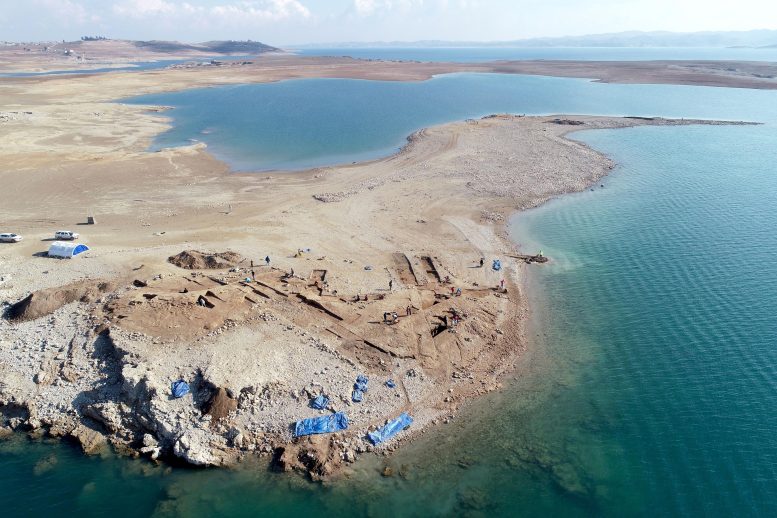
The archaeological site of Kemune in the dried-up area of the Mosul reservoir. Credit: Universities of Freiburg and Tübingen, KAO
Drought Reveals 3400-Year-Old Urban Center of the Mitanni Empire
The Kingdom of Mitanni, also known as Hurri to the Hittites, Hanigalbat or Hani-Rabbat to the Assyrians, and Maryannu, Nahrin or Mitanni to Egyptians, was a powerful nation around the 16th century BC that stretched over portions of present-day Syria, Iraq, and Turkey.
Although it was believed to be a substantial regional power for a time, not a lot is known about it today compared to other ancient nations of the time. Part of the reason is that no native sources for the history of Mitanni have been discovered yet.
Now, a team of German and Kurdish archaeologists has uncovered a 3400-year-old Mitanni Empire-era city once located on the Tigris River. The settlement emerged from the waters of the Mosul reservoir early this year as water levels fell rapidly due to extreme drought in Iraq. The extensive city with a palace and several large buildings could be ancient Zakhiku – believed to have been an important center in the Mitanni Empire (ca. 1550-1350 BC).
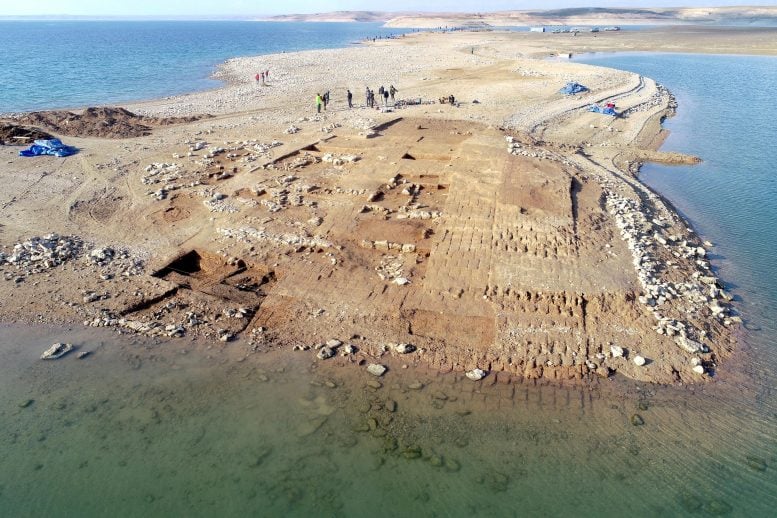
Aerial view of the excavations at Kemune with Bronze Age architecture partly submerged in the lake. Credit: Universities of Freiburg and Tübingen, KAO
Bronze Age city resurfaced due to drought
Iraq is one of the countries in the world most affected by climate change. The south of the country in particular has been suffering from extreme drought for months. To prevent crops from drying out, large amounts of water have been drawn down from the Mosul reservoir – Iraq’s most important water storage – since December. This led to the reappearance of a Bronze Age city that had been submerged decades ago without any prior archaeological investigations. It is located at Kemune in the Kurdistan Region of Iraq.
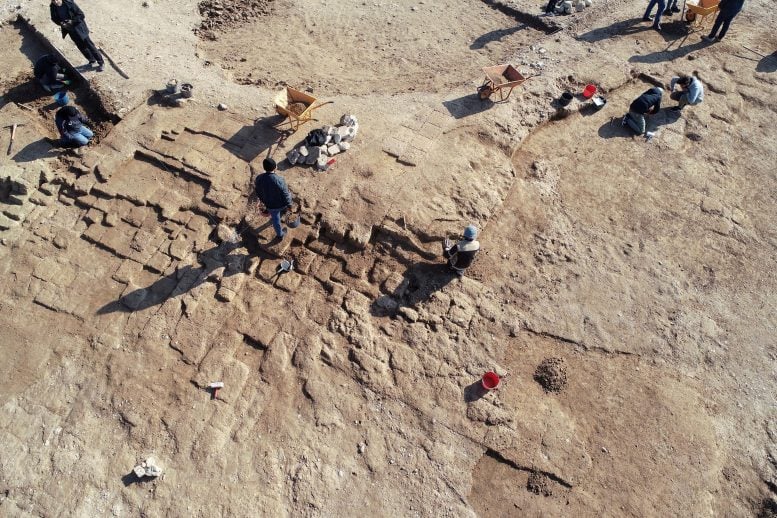
Archaeologists and workers uncover mud-brick walls of the buildings in the ancient city at Kemune. Credit: Universities of Freiburg and Tübingen, KAO
This unforeseen event put archaeologists under sudden pressure to excavate and document at least parts of this large, important city as quickly as possible before it was resubmerged. The Kurdish archaeologist Dr. Hasan Ahmed Qasim, chairman of the Kurdistan Archaeology Organization, and the German archaeologists Jun.-Prof. Dr. Ivana Puljiz, University of Freiburg, and Prof. Dr. Peter Pfälzner, University of Tübingen, spontaneously decided to undertake joint rescue excavations at Kemune. These took place in January and February 2022 in collaboration with the Directorate of Antiquities and Heritage in Duhok (Kurdistan Region of Iraq).
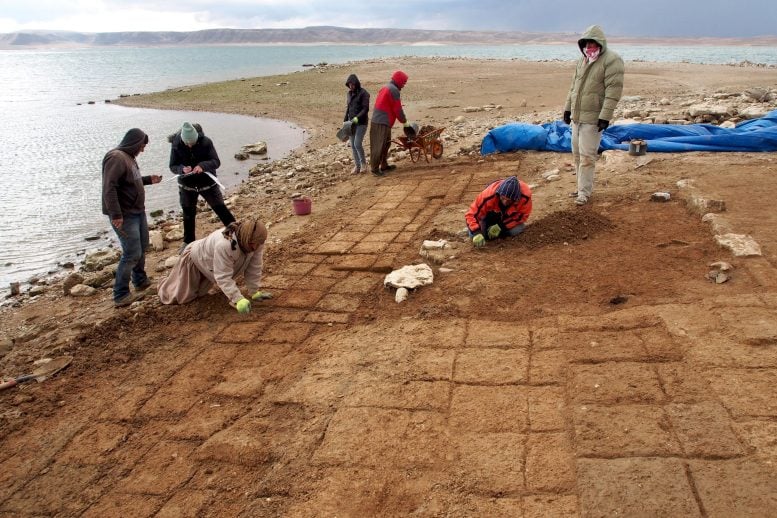
The mud bricks of the Bronze Age buildings are soaked by the water of the reservoir but can still be easily recognized and exposed. Credit: Universities of Freiburg and Tübingen, KAO
Fritz Thyssen Foundation supported excavations
A team for the rescue excavations was put together within days. Funding for the work was obtained at short notice from the Fritz Thyssen Foundation through the University of Freiburg. The German-Kurdish archaeological team was under immense time pressure because it was not clear when the water in the reservoir would rise again.
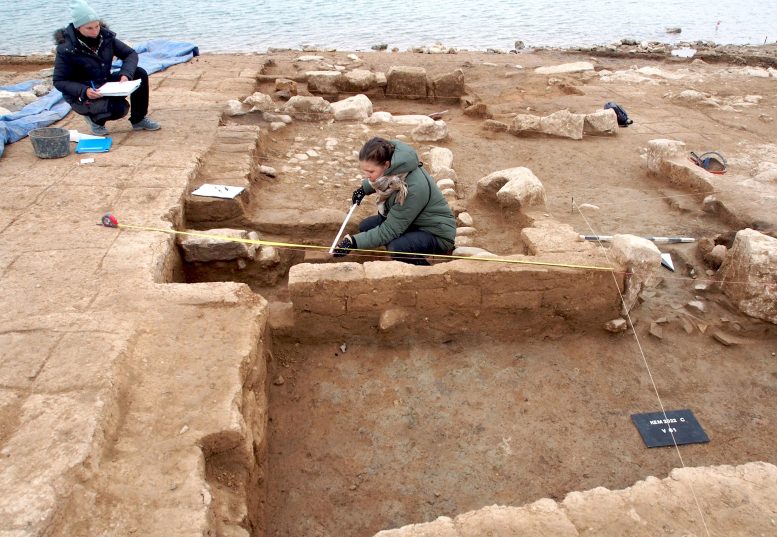
The excavated large buildings from the Mitanni period are measured and archaeologically documented. Credit: Universities of Freiburg and Tübingen, KAO
Massive fortification, multi-story storage building, industrial complex
Within a short time, the researchers succeeded in largely mapping the city. In addition to a palace, which had already been documented during a short campaign in 2018, several other large buildings were uncovered – a massive fortification with walls and towers, a monumental, multi-story storage building, and an industrial complex. The extensive urban complex dates to the time of the Empire of Mitanni (approx. 1550-1350 BC), which controlled large parts of northern Mesopotamia and Syria.
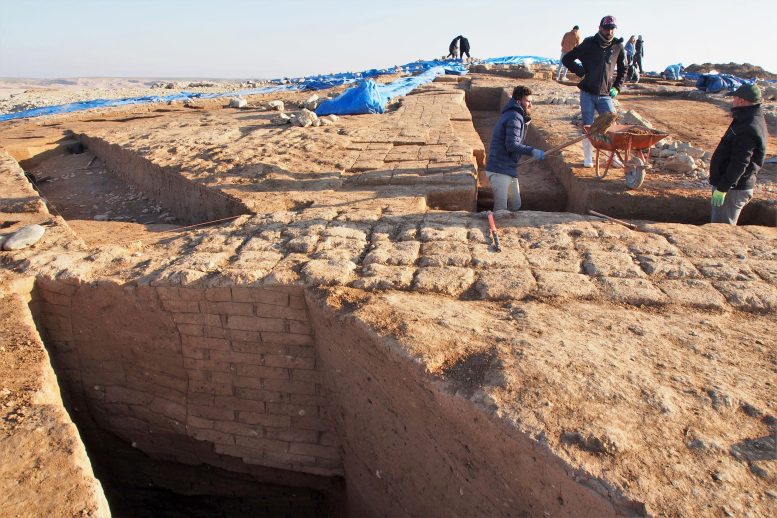
Archaeologists and workers excavate the walls of a large building in the ancient city, which is interpreted as a storage building from the time of the Mitanni Empire. Credit: Universities of Freiburg and Tübingen, KAO
“The huge magazine building is of particular importance because enormous quantities of goods must have been stored in it, probably brought from all over the region,” says Puljiz. Qasim concludes, “The excavation results show that the site was an important center in the Mitanni Empire.”
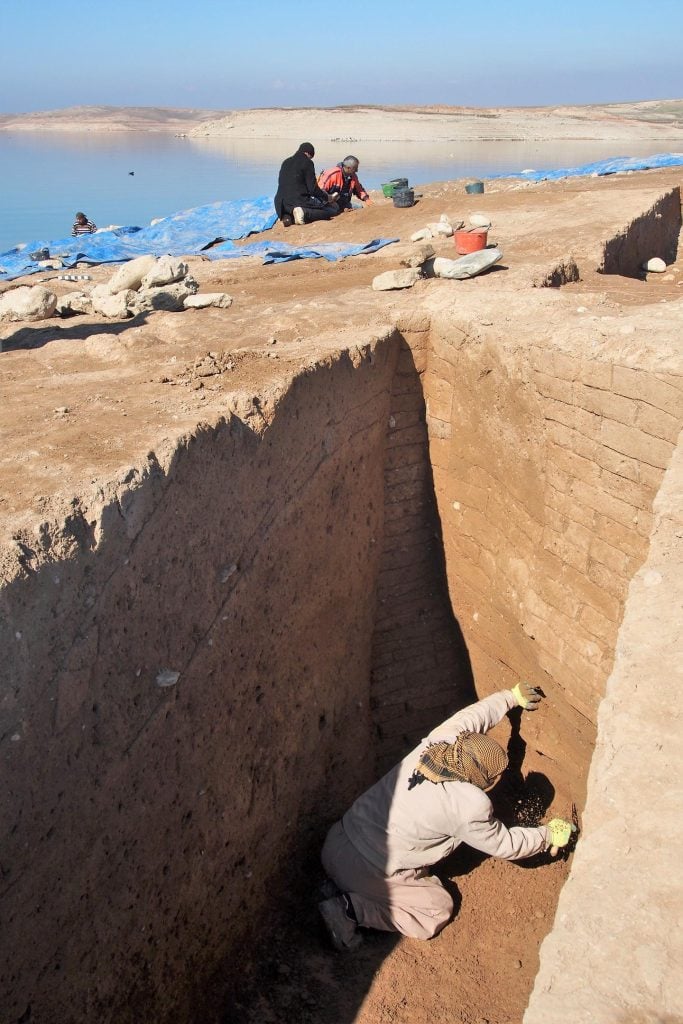
The walls of the Mitanni-period storage building are partly preserved several meters high. Credit: Universities of Freiburg and Tübingen, KAO
The research team was stunned by the well-preserved state of the walls – sometimes to a height of several meters – despite the fact that the walls are made of sun-dried mud bricks and were under water for more than 40 years. This good preservation is due to the fact that the city was destroyed in an earthquake around 1350 BC, during which the collapsing upper parts of the walls buried the buildings.
- Pottery vessels, in which cuneiform tablets were stored, are standing in the corner of a room from the Middle Assyrian period (c. 1350–1100 BC). Credit: Universities of Freiburg and Tübingen, KAO
- One of the vessels with cuneiform tablets is inspected before being recovered. Credit: Universities of Freiburg and Tübingen, KAO
- View into one of the pottery vessels with cuneiform tablets, including one tablet which is still in its original clay envelope. Credit: Universities of Freiburg and Tübingen, KAO
- A restorer carefully retrieves the cuneiform tablets from an opened pottery vessel in the laboratory of the excavation team in Duhok. Credit: Universities of Freiburg and Tübingen, KAO
Ceramic vessels with over 100 cuneiform tablets
Of particular interest is the discovery of five ceramic vessels that contained an archive of over 100 cuneiform tablets. They date to the Middle Assyrian period, shortly after the earthquake disaster struck the city. Some clay tablets, which may be letters, are even still in their clay envelopes. The researchers hope this discovery will provide important information about the end of the Mitanni-period city and the beginning of Assyrian rule in the region. “It is close to a miracle that cuneiform tablets made of unfired clay survived so many decades underwater,” Pfälzner says.
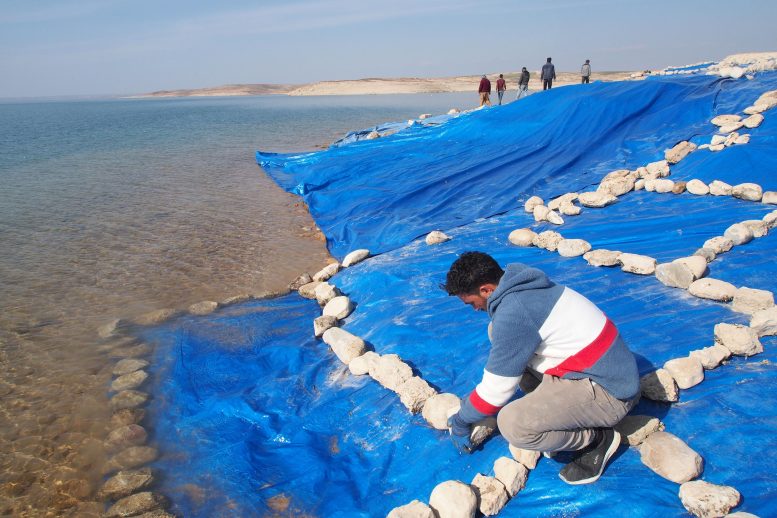
After the research team has completed their work, the excavation is covered extensively with plastic foil to protect it from the rising waters of the Mosul reservoir. Credit: Universities of Freiburg and Tübingen, KAO
Conservation project to prevent damage by rising water
To avert further damage to the important site by the rising water, the excavated buildings were completely covered with tight-fitting plastic sheeting and covered with gravel fill as part of an extensive conservation project funded by the Gerda Henkel Foundation. This is intended to protect the walls of unbaked clay and any other finds still hidden in the ruins during times of flooding. The site is now once more completely submerged.

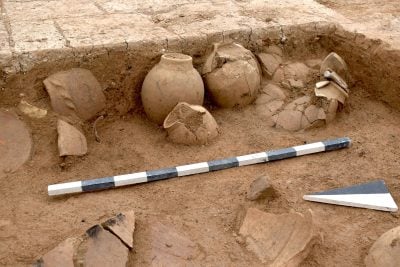
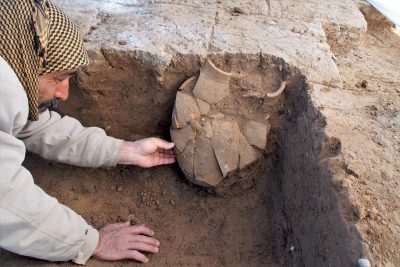
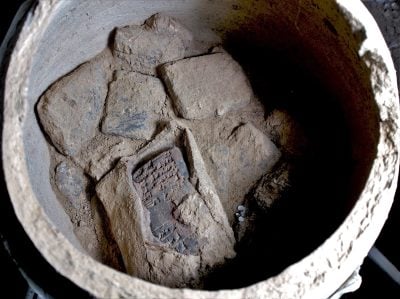
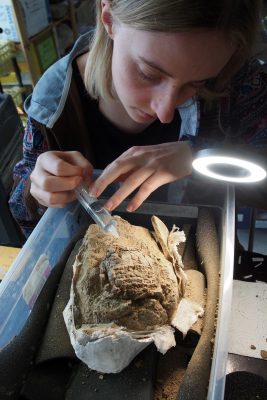



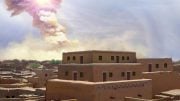




Nebraska no caaahhhh
May that earthquake in about 1350 BC be tied to destruction of Santorini?
Link to Santorini must be investigated as a possibility?
Considering that Santorini eruption happened some time between 1611BC and 1538BC, connection to something in 1350BC seems unlikely.
If you aren’t calling the German researchers Bavarian or Saxonian, you also shouldn’t call Iraqi researchers Kurdish.
It is just awesome stuff
Sorry, I believe Nebraskans in general are smarter than that. This is a treasure and I hope further work will be done to preserve and study it.
So they obviously didn’t build the city underwater. Was there a drought then, when it was constructed?
How can it be said that there is currently a severe drought when water levels are returning to where they once were in order to expose this?
Cool hand Luke… The reason the ancient city is underwater is because it’s located within the Mosul Dam basin which was constructed back in the 80s. It’s a man made water body and the article mentions that the walls been under water for more than 40 years.